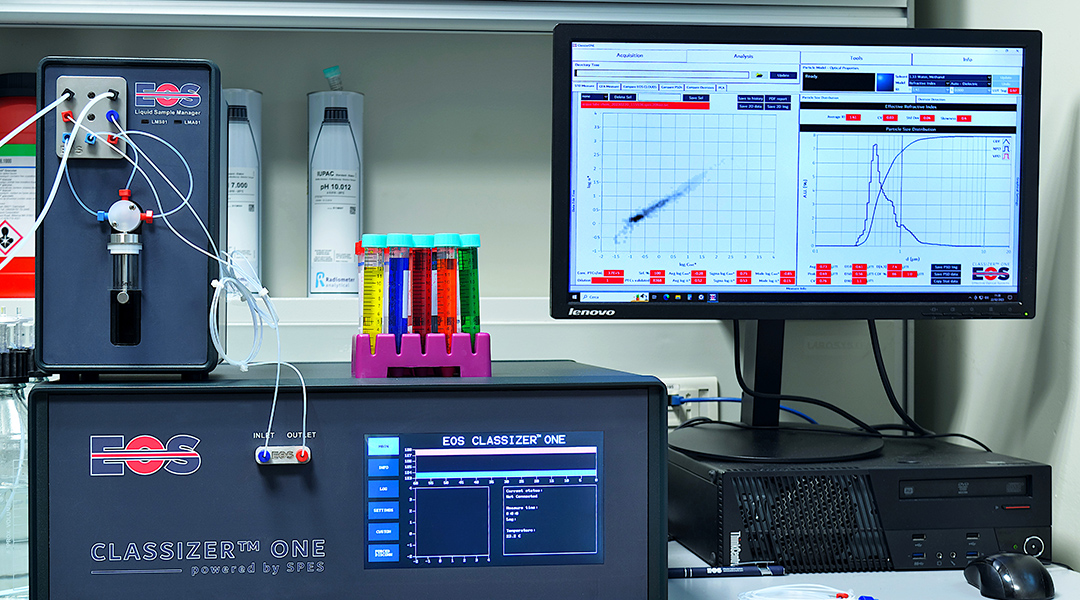Scientists have applied an advanced light-scattering technique to quantify the release of micro- and nanoplastics from heated plastic food containers.
For decades, scientists have been warning about the hazardous effects of microplastics, now pervasive in our environment, and it has long been known that microwaving plastics contribute to their release.
“There is no doubt that such particles are causing concern among experts precisely because of their ubiquity: they can be now found in almost every ecosystem and there are many studies reporting their presence in the human body,” said Marco Pallavera, a researcher at EOS Instruments in Milan and one of the study’s scientists. “[Their ability] to penetrate barriers in the human body is outstanding.”
While potentially worrying, there are still significant gaps in our understanding ranging from uncertainty around sources and pathways to the environment, as well as the full extent of their toxicity and potential health impacts through ingestion or inhalation. Consequently, tracking and quantifying their release and uptake remain challenging, potentially resulting in an underestimation of their release and associated risks — regardless of their ubiquity.
To address this problem, Pallavera and his colleagues applied an optical technique called single particle extinction and scattering (SPES), which can be used to study the size, shape, and composition of small particles based on how they interact with light. “Extinction” measures how much light is blocked or absorbed by the particle, while “scattering” measures how the light is redirected in different directions.
“One of its strengths is being able to characterize, independently, the size and the refractive index of each particle in the sample,” explained Tiziano Sanvito, another of the study’s contributing scientists. “In this case, the technique made it possible to determine that the population generated was composed of spherical particles of the same material as that of the container. We could clearly discriminate the microplastics from the baseline.”
The team found that below a certain temperature threshold, there was no relevant amount of particles coming from the container walls. However, heating water to its boiling point resulted in the release of microplastics from the container — the concentration of particles rose by a factor of 1000, with their origin connected to the container. The concentration kept growing linearly as the water was kept boiling.
“Notably, this release of particles occurs well below the melting temperature of the material,” said Pallavera. The particles detected ranged from 0.3 to 2 µm in size. These are already considerable small microplastics compared to those that occur after fragmentation as a consequence of mechanical degradation or UV exposure, said the researchers.
The team were able to characterize the particles quickly and cost-effectively, with minimal sample preparation, and with a solid statistical significance of the results.
“Moreover, we can continuously monitor what happens in the sample in real time,” said Sanvito. “Our goal was to address something that was still not much covered by literature, but this only raises more questions. For example, one could wonder how spherical polypropylene particles interact once they are in contact with food.”
The scientists say they couldn’t comment on the toxicity of the particles released and their overall impact on food and health as this data was not gathered in the current study.
“Our job is to gather quantitative data and discuss the results objectively with the scientific community,” said Pallavera. “We also believe that policies can benefit greatly from scientific research and that joint efforts are most effective when it comes to guarantee for consumers.”
Reference: Llorenç Cremonesi, et al., Evidence of sub-micrometric plastic particle release when heating food containers based on light scattering measurements, Particles and Particle Systems Characterization (2024). DOI: 10.1002/ppsc.202400029
Feature image credit: Llorenç Cremonesi, et al.

















